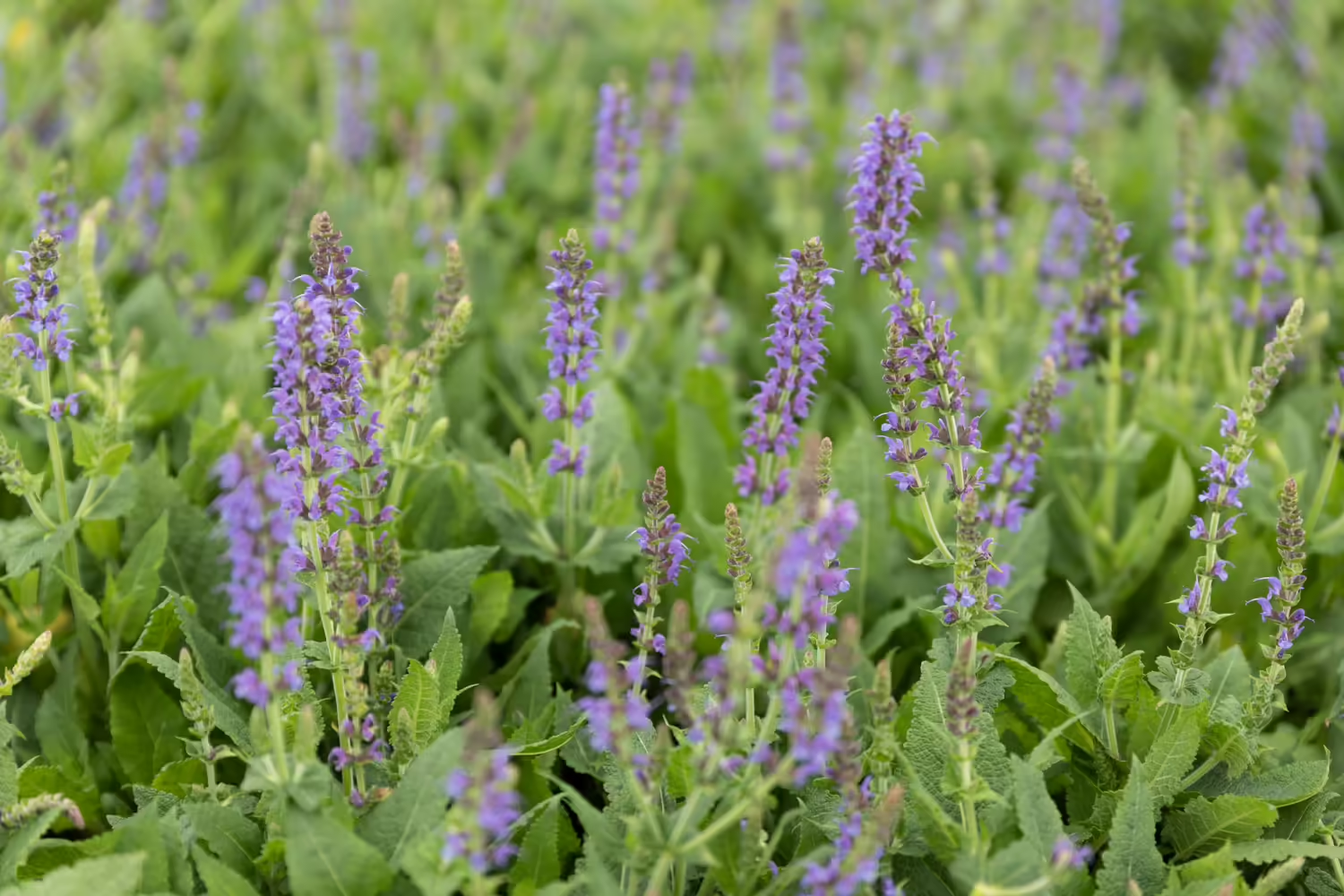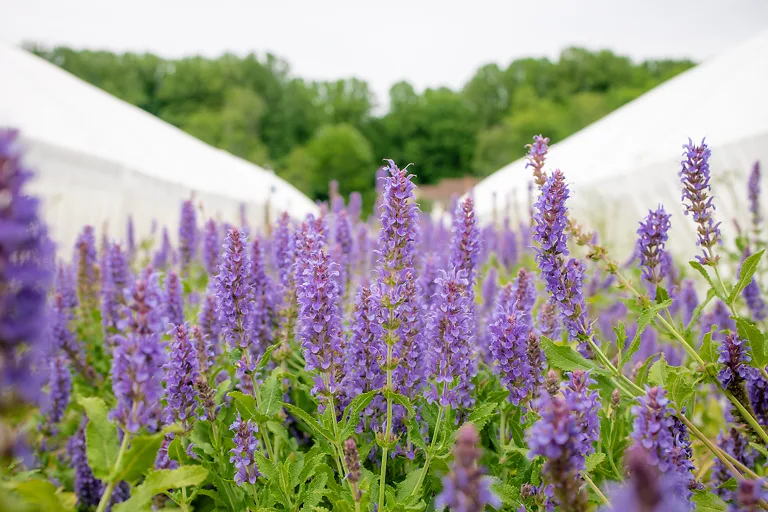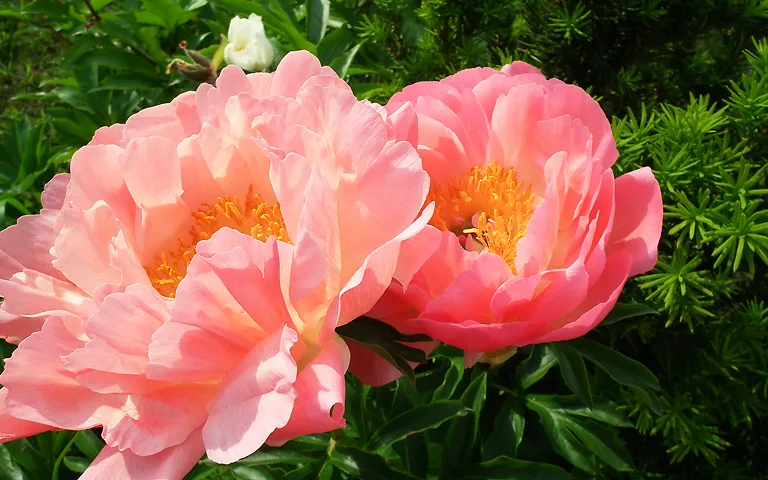
Written by s • Karl Foerster and The Roots of Perennial Gardening
It’s hard to image a garden without perennial flowers, but once that was how gardens were. With some exceptions, mostly in England in the decades before World War I, gardens were shrubs and tender annuals like petunias and geraniums. The perennials gardens of the English that existed when the 20th century began were complex and needed high levels of maintenance, and few survived the loss of people and money wrought by the Great War. In the decades following Word War II there was a return of traditional styles, with annual flowers again dominating gardens, plus a few basic shrubs and trees. That all changed with the resurgence of perennial gardening in the last decades of the 20th century.
In between those two wars there was a blooming of many new ideas, with plants and gardening a part of that blooming. In particular, the idea of growing perennials in a more natural style, using ornamental grasses as well, developed – but not everywhere at the same time. This was an idea that first saw light in Germany, but the turbulent history of that country in the last century meant that much of this work didn’t see the light until after the Iron Curtain came down. Even today the name of Karl Foerster is still unknown to many gardeners, except perhaps as a label on a popular ornamental grass. Yet without his work in both design and plant breeding, we would not have the enormous range of plants and styles for perennial gardens that we take for granted today.
Karl Foerster was born in 1874 into relative wealth, and his father was director of the Berlin Observatory. One brother became a ship designer, another a philosopher, but Karl became a gardener in his teens, first apprenticing in the grand gardens of the also-grand Schwerin Castle. From there he went to the prestigious Royal Gardening School in Potsdam, Prussia, where he studied both practical gardening and garden design. In 1903 he started a perennial nursery at his parent home, but around 1910 he moved to a piece of land in the small town of Bornim, outside Potsdam. There he built a garden covering 1¼ acres.
Garden Design in Bornim
A few years before Foerster was a student, Willy Lange had also been at the Royal Gardening School. Lange was a ground-breaking garden designer, and the first to follow ecological concepts in designing gardens. Foerster quickly fell under his influence. The gardens at Bornim, and Foerster’s approach to gardening, were greatly influenced by Lange’s concepts. It is easy to see them today as the first ‘modern’ gardens, shedding the old formalism of the previous century.
With his interest in design as strong as his interest in plants, by the late 1920s Foerster had gathered around him a group of young and enthusiastic designers, headed by Herman Mattern, who would become one of Germany’s most prominent landscape designers. Calling themselves “Garden Design in Bornim”, they were dubbed the “Foersterians”, and Bornim was described as the “Worpswede of garden designers” after an avant- garde artists colony in the town of that name. Through the 1930s the group became successful, winning the “Annual Garden and House” competition in Munich in 1935 and receiving large, prestigious contracts with companies such as the pharmaceutical giant IG Farben, and Berlin Radio.
Perhaps these words from Foerster sum up his philosophy, and are as relevant today as they were almost a century ago: “Don’t create unfurnished rooms and then put plants in them, as if they were furniture. Instead, ask the plants what they want.” That last – ask the plants what they want – sums up his whole approach to gardening.
Foerster died in 1970, as the resurgence of perennials was just beginning. His garden and house have been preserved, and can be visited in Bornim.
Plant Breeding, Foerster Style
Gardening styles come and go, but they all involve plants, and it was with plants that Foerster made his enduring reputation. He wasn’t a technical breeder, making artificial crosses and using chemical treatments. Instead he relied chiefly on letting plants breed naturally, and then selecting the most appealing ones. He would plant 20 or 30 thousand plants in a field, and simply let them seed naturally, removing the weaker, less attractive ones over a 5-year period until he had a collection of new varieties. These survivors he called his ‘long playing records’. They would then be preserved by growing them from cuttings or divisions, and named for sale through his nursery. Since he grew so many different species, many of his varieties are probably hybrids, but we rarely know one way or the other.
His output was impressive, but it must be remembered that he had an open field, since there were so few selected varieties available at the time. He introduced 83 varieties of garden phlox, 38 perennial sunflowers, 20 fall asters and 15 summer asters, 20 chrysanthemums, and his favorites of all, 72 delphiniums. Many of his varieties are still available in German nurseries, but in America he is remembered mostly for his ornamental grasses, and for Salvia like May Night.
Foerster summed up his breeding goals this way: “To develop a limited assortment from the chaos of species and varieties, with plant that combine great beauty with practical durability and a willingness to grow.” With today’s emphasis on novelty, this is an idea worth revisiting.
Foerster as a Garden Writer
Foerster’s considerable output as a writer had an unlikely beginning. In 1917 he was commissioned by the German Student’s Union to write a book on the ‘Garden of the Future’. It became an instant hit and was carried by soldiers on the front lines. Perhaps it gave them hope of a happier life if they survived the horrors of each day.
“We need beauty as daily bread for the soul, like the body needs bread. Discouragement lurks in the still ugly corners of our lives; where there is too little beauty, there is strife.”
He became a celebrity, and found ways to spread his ideas about plants and gardening. Between 1933 and 1943 he published 11 books, wrote a weekly column for a magazine and gave frequent radio talks. Perhaps his most famous book is entirely on blue plants – “The Blue Treasure of Gardens” – and he also wrote books on grasses and ferns, and container gardens.
Turbulent Times. . .
The period of Foerster’s long life were hardly tranquil. His father lost his job, and his philosopher brother his university position, for criticizing the Prussian government during the Great War. In 1933 that brother escaped into exile in Switzerland, being one of the first on the Nazi’s list for expulsion and book-burning. Yet in 1940 Karl joined a political party affiliated with the National Socialists. He signed his business letters ‘Heil Hitler”, and his nursery supervisor was a Nazi who had to flee the country in 1945 to escape retribution. So was Foerster a Nazi? After all, while doing these things he also hid Jews in his house, and helped people escape the country.
The reality is that he was an idealist, who thought that gardening would save the world from warfare. He avoided conflict, and wouldn’t argue – perhaps growing up in a political household had turned him away from that. His home and nursery were kept free of conflict, even while storms raged around it. He wasn’t willing to follow his father and brother, and like the plants he admired, he tried to adapt to the environment around him, rather than resist it. It was the same after the war, when he found himself on the communist side of the Iron Curtain. The GDR showered him with honorary professorships, doctorates and awards, which he graciously accepted – the price of keeping his nursery going.
This was a man who knew how to survive, even if he had private regrets. Consider this, written in a letter in 1943: “We are all complicit in our too easy confidence in God. We quiet people in the country should have reached into the spokes of the wheel, glowing awake. Now we belong to the bearers of vicarious suffering. But we weren’t even woken up by a signal like the book ‘Mein Kampf’”. Perhaps these are words we should listen to today.
Much of the material in this blog is drawn with thanks from: https://www.deutschlandfunkkultur.de/garten-philosoph-karl-foerster-der-biegsame-staudengaertner-100.html







